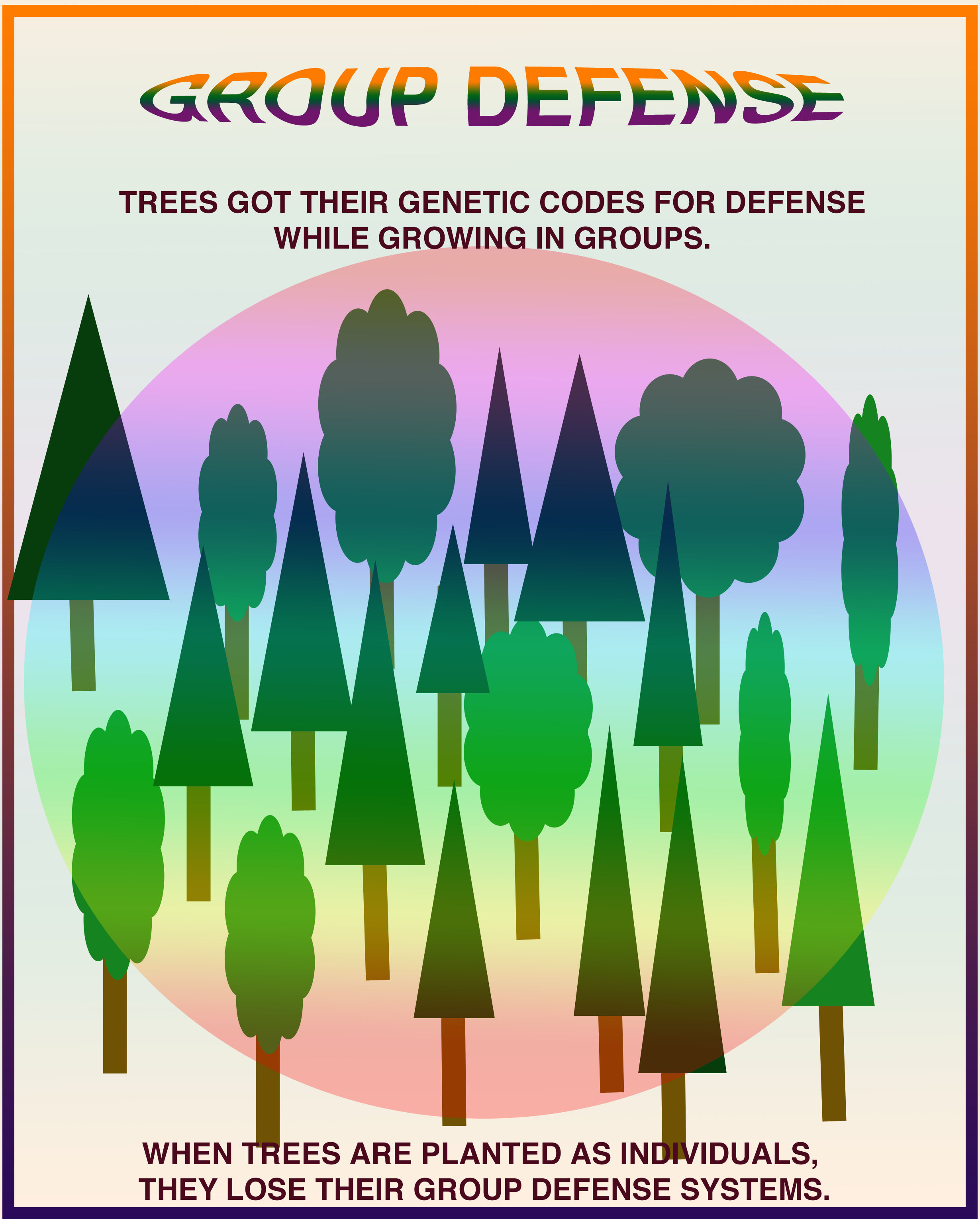
Planting In A Cluster / Group
When possible plant trees in groups. Trees were once planted in single rows along roads to tie horses too. Then when wood is shed it can benefit the living soil, for starters.
(Source: Articles published in TCI by Dr. Alex L. Shigo. Links at end of page).
Trees as business conglomerates.
Trees are often referred to as living systems. Many of the problems with understanding phenological stages could be clarified if a tree was viewed not as a single system, but rather as a cluster of systems connected in highly ordered ways. Maybe a tree is more like a business conglomerate. If the business conglomerate analogy could be accepted, then many different parts of a tree could be in different phonological stages at the same time. Many aboveground stages are different from those below ground. In the sense of natural dualities, the business conglomerate analogy is a better way to view a tree.

The increase in exudates (trees form of taxes to soil) from a declining tree with a defense system weakened by low energy reserves would give root pathogens an advantage over other soil organisms. When the tree dies, its dead wood adds a great amount of carbon to the soil, thus benefitting all soil organisms. If this scenario is correct, then the codes for the increase of exudates as trees decline would have been set in the genes of the forest trees. Then, even after trees are taken out of their groups in forests and planted as individuals, the genetic codes for increasing exudates as the tree declines for reasons other than crowding would still be in effect.
A tree does not "know" why it is dying. In a crowded, young, growing forest, the self-thinning rule of ecology does benefit tree survivors and all soil organisms. But, when one or two trees in a yard, city or park start to decline, their early death may benefit only the root pathogens. And even worse, since the tree will be cut and removed from the site, there would be no benefits from added carbon to the soil.
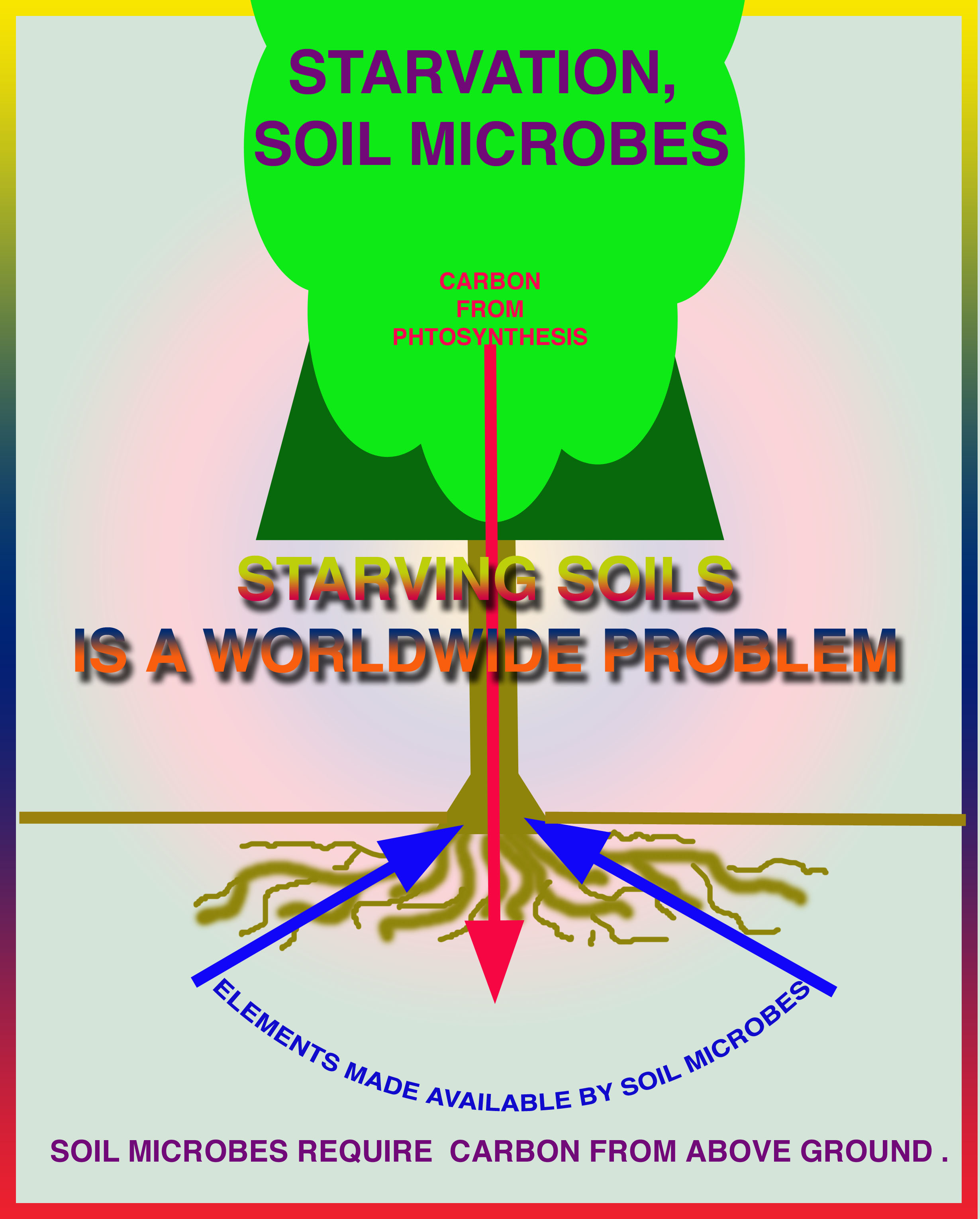
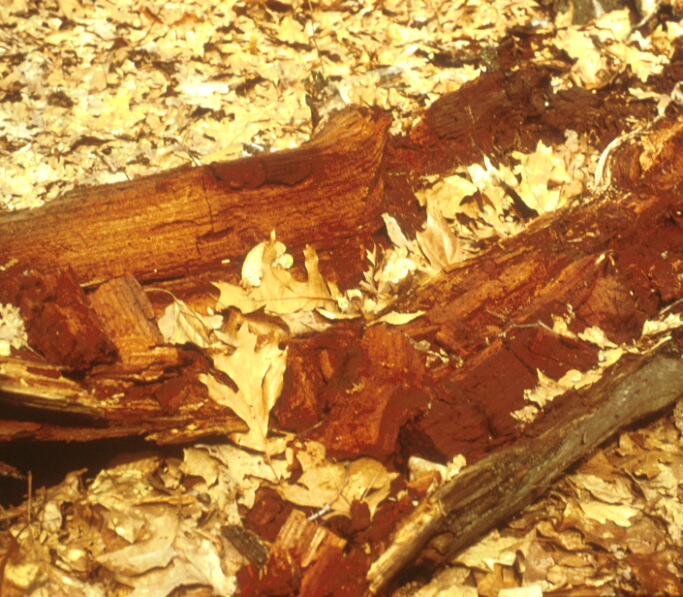
(Above - Soil, Carbon, Logs, Rot)
This leads to the conjecture that the natural connections that developed over long periods in the natural forest may have some survival value. That is why forest types are often named for the groups of species commonly found growing together. For example, we speak of the birch-beech-maple forest, or the pine-oak forest. From a practical standpoint, when trees are planted in cities and parks, there may be great survival advantages by planting groups of trees made up of the species that are normally found together in natural stands.
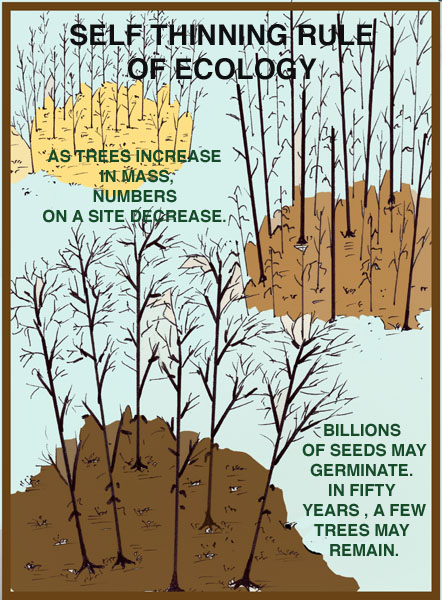
Trees became trees growing in groups in forests where the self-thinning rule had strong survival value. Not only did exudates provide quick energy for the rhizosphere organisms (tree soil interface), but the carbon in the wood of the trees that fell to the ground also provided a long-lasting energy source for a succession of organisms.
Reports from some countries indicate an abundance of soluble nitrogen compounds in runoff water and even in ground water. This is a strong indication that the carbon-nitrogen ratio has been disrupted in the soil.
Forest tree, city tree
Trees became tall, massive and long-living plants as they grew in groups. Trees not only connect with other trees by way of root grafts but also by way of the fungi that are associated with non-woody roots; the organs are called mycorrhizae. Trees also connected with many other organisms, very large to very small, in ways that benefited the trees and their associates. Synergistic associations are important parts of the tree system.
A forest is a system where trees and many associates are connected in ways that ensure survival of all members.
It is important to remember that the genetic codes for survival, or vigor, came from trees growing in forests.
When the forest-coded tree is brought into the city, the factors that affect vitality become extremely important. The architecture of most city trees as they grow as individuals is different from most of their relatives in the forest where trees grow in groups. Forest trees have group protection and group defense. The individual tree has neither.
The good news, the bad news
The good news is that most of our city trees have strong vigor codes that have made them super survivors for hundreds of millions of years.
The bad news is that many human actions and mistreatments affect vitality and undo all the benefits of wondrous vigor code. It is only because most trees have such strong vigor codes that they still survive in cities.
There is no doubt in my mind that the greatest threat to survival faced by city trees are mistreatments by humans. Many trees tolerate mistreatments. Too often their tolerance is perceived as justifications for the mistreatments. I have heard it said many times that the tree did not die, so therefore the treatments must have been correct.
Groups, trees in their place, grass somewhere in its. Not mixed.

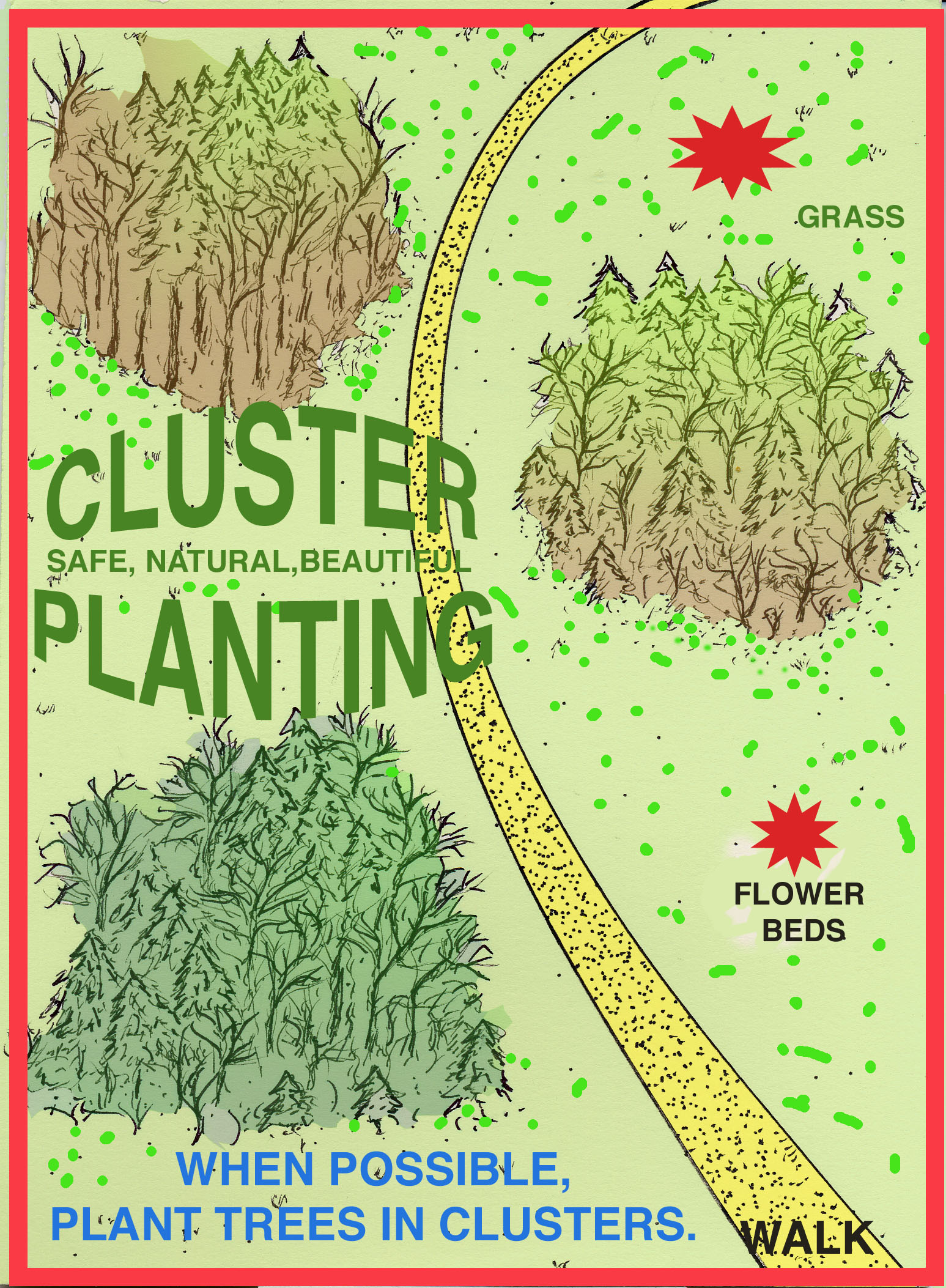
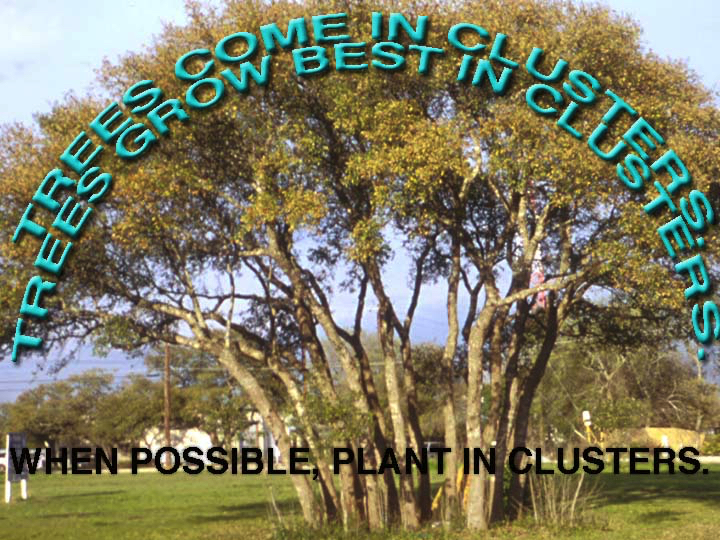


Loving your work is different from understanding it. Both are necessary. The degree of effective management of any system is directly proportional to the degree of correct understanding of the system. Ignorance of tree biology has been, and still is, the major cause of tree problems worldwide.
SOURCE:
Dictionary
MAIN
PAGE
Text & Graphics Copyright © 2019 Keslick & Son Modern Arboriculture
Please report web site problems, comments and words of interest,
not found.
Contact